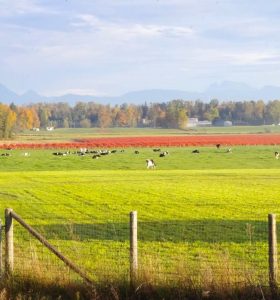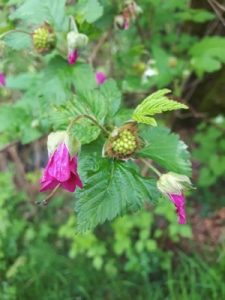Listening to the Land is an ongoing, collaborative journey. This process is not merely a prologue to decolonization, nor is it a finite project to be completed partway through a larger one. Rather, active listening is a fundamental, constant, and evolving part of ethical land stewardship. Learning to listen to the land is both an initial step towards and an omnipresent, inextricable component of building and sustaining right relation with the land and the beings who share it with us.
 The lands we inhabit are complex and adaptive spaces, and their growth has been shaped and interpreted by a myriad of human and more-than-human forces. The biotic and abiotic markers of these histories have material and social presence. History is and made through soil, weather, inter-species interaction, land treaties, economic exploitation, and zoning bylaws. Listening to the land requires an attentiveness to these markers, and an engagement with the ways in which the land’s inhabitants both past and present have recognized, interpreted, and acted upon them.
The lands we inhabit are complex and adaptive spaces, and their growth has been shaped and interpreted by a myriad of human and more-than-human forces. The biotic and abiotic markers of these histories have material and social presence. History is and made through soil, weather, inter-species interaction, land treaties, economic exploitation, and zoning bylaws. Listening to the land requires an attentiveness to these markers, and an engagement with the ways in which the land’s inhabitants both past and present have recognized, interpreted, and acted upon them.
In recent years, conversations around truth, reconciliation, and indigenous land histories have given rise to territorial land acknowledgements. The typical land acknowledgement — whether written in a mission statement or spoken aloud during an event — seeks to name and centre indigenous peoples, the history of a land’s habitation, and by implication the systemic violence, displacement, and theft which led to present land relations. Yet even formulaic land acknowledgements name the people groups associated with a given territory, they does not give voice to the international dynamics between these peoples, the interrelation of their histories, or their ongoing presence upon and relationship to the land.
Indigenous histories of land use and habitation are complex, site-specific, and oftentimes overlapping. Colonization, and the ways in which the colonial governments oversaw the division of land, complicate matters further. For instance, the territory outside Aldergrove, BC on which the Fraser Common Farm lies falls within the territorial ranges of the Kwantlen and Matsqui peoples, just to the west of the 1864 boundaries of the Matsqui Reserve.
However, prior to colonization, indigenous peoples in the Fraser Valley defined the boundaries of their territories through watershed. Under this view, the Fraser Common Farm lies within the Betrand Creek watershed, which is the traditional territory the Nooksack people. Prior to colonization, the Matsqui and Nooksack peoples shared much of the land between were further intermarried with each other. Yet when the reserves were formed, the Canadian government split the Nooksack people across the US-Canada border and assigned the Nooksack territories in the vicinity of Aldergrove and Abbotsford to the Matsqui. The history of the Fraser Common Farm’s indigenous habitation is thus one of overlap, interrelation, displacement, and fragmentation.
Even when it remains comparatively easy to identify a land’s traditional inhabitants, habitation is not the limit of history. For instance, the town of Squamish lies within the traditional and unceded territory of the Sḵwx̱wú7mesh Úxwumixw, or Squamish Nation. The Sḵwx̱wú7mesh people have a lengthy history of cooperation, reciprocity, and exchange with the L̓il̓wat7úl nation to the north. The Sḵwx̱wú7mesh and L̓il̓wat7úl peoples were in constant communication. The two peoples exchanged resources, shared stories, and lived together in the nearby territory of Whistler. Thus, while only one nation inhabited Squamish at the time of colonization, the history of that nation is interwoven with others.
 The histories embedded in the land are complex and interrelated. They include but are not limited to the dynamic and evolving webs of human habitation, intercultural relation, and the stewardship human beings have practiced. Thus, a comprehensive account of a territory’s habitation during, prior to, and in the aftermath of colonial division is still not a full account of its history.
The histories embedded in the land are complex and interrelated. They include but are not limited to the dynamic and evolving webs of human habitation, intercultural relation, and the stewardship human beings have practiced. Thus, a comprehensive account of a territory’s habitation during, prior to, and in the aftermath of colonial division is still not a full account of its history.
Recognizing the people who have lived on the land since time immemorial, and their relationships on and to the land, is vital to the work of Listening to the Land. The lands we inhabit are complex and storied, and throughout their history, their inhabitants have known, shaped, and responded to their histories in disparate ways. Understanding and nurturing right relation with the land requires us to do the same with its other inhabitants, both past and present. It is for this reason that Listening to the Land begins by bringing settler farmers and indigenous people together for knowledge-sharing, relationship-building, and conversations of reciprocity, accountability, and mutual recognition.
Gerhardt Troan – October 2023












